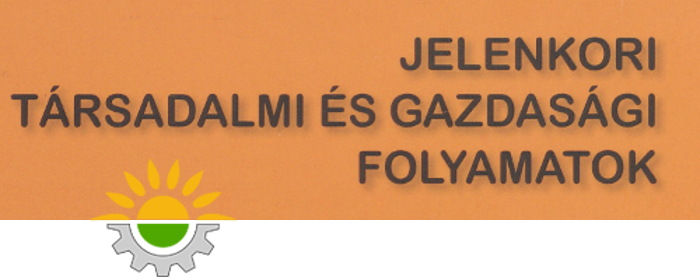The Future of Augmented Reality Application Development: Trends and Opportunities
Main Article Content
Abstract
The future of augmented reality (AR) application development is being shaped by emerging trends and expanding opportunities across various industries. In this study, key advancements in AR technology, including artificial intelligence integration, cloud computing, and 5G connectivity, are examined. The increasing adoption of AR in sectors such as healthcare, education, retail, and manufacturing are highlighted, emphasizing its role in enhancing user experiences and operational efficiency. The challenges related to hardware limitations, data security, and user privacy are also discussed. A review of current development frameworks and platforms is conducted, showcasing the evolution of AR tools and their impact on accessibility for developers. The shift toward web-based and cross-platform AR solutions is explored, demonstrating the growing demand for seamless and scalable applications. Additionally, opportunities for innovation in AR content creation, user interaction, and enterprise applications are identified. Through an analysis of these trends, it is concluded that AR development will continue to evolve, driven by advancements in computing power, sensor technology, and user demand. It is suggested that collaboration between researchers, developers, and businesses will play a crucial role in overcoming existing barriers and unlocking the full potential of AR applications in the future.
Downloads
Article Details
References
Al-Ansi, A. M., Jaboob, M., Garad, A., Al-Ansi, A. (2023): Analyzing augmented reality (AR) and virtual reality (VR) recent development in education. Social Sciences & Humanities Open, 8 (1): 100532. https://doi.org/10.1016/j.ssaho.2023.100532
AlGerafi, M. A. M., Zhou, Y., Oubibi, M., Wijaya, T. T. (2023): Unlocking the Potential: A Comprehensive Evaluation of Augmented Reality and Virtual Reality in Education. Electronics, 12 (18): 3953. https://doi.org/10.3390/electronics12183953
Arena, F., Collotta, M., Pau, G., Termine, F. (2022: An Overview of Augmented Reality. Computers, 11 (2): 28. https://doi.org/10.3390/computers11020028
Ashibil, A., Víg, P. ., Erdélyi, V. ., Tóth, J., Farkas, I. (2024): Performance Assessments of Direct Contact Serpentine Tube Based Photovoltaic Thermal Module: An Experimental Comparison. Journal of Engineering and Sustainable Development, 28 (4): 473–479. https://doi.org/10.31272/jeasd.28.4.6
Ashtari, N., Bunt, A., McGrenere, J., Nebeling, M., Chilana, P. K. (2020): Creating augmented and virtual reality applications: Current practices, challenges, and opportunities. In: Proceedings of the 2020 CHI conference on human factors in computing systems, 1–13. https://doi.org/10.1145/3313831.337672
Boboc, R. G., Gîrbacia, F., Butilă, E. V. (2020): The Application of Augmented Reality in the Automotive Industry: A Systematic Literature Review. Applied Sciences, 10 (12): 4259. https://doi.org/10.3390/app10124259
Bodhwani, K., Sharma, A. (2023): The Future of Augmented Reality: Emerging Trends and Challenges. Landscape, 4 (2): 1–63. https://doi.org/10.5281/zenodo.11291283
Bondarenko, V., Zhang, J., Nguyen, G. T. Fitzek, F. H. P. (2024): A Universal Method for Performance Assessment of Meta Quest XR Devices. 2024 IEEE Gaming, Entertainment, and Media Conference (GEM). Turin, Italy, 2024, 1-6, https://doi.org/10.1109/GEM61861.2024.10585428
Csík, D., Odry, Á., Perti, R., O., Sárosi, J. Sarcevic, P. (2023): A novel orientation-based FSPL model parameter optimization method using PSO for indoor localization. In: IEEE 21st World Symposium on Applied Machine Intelligence and Informatics SAMI (2023): Proceedings. 201–205.
Csikós, S., Bálint, Á. (2016): DC motor speed control in LabVIEW. Recent Innovations in Mechatronics, 3 (1-2): 1–3. https://www.doi.org/10.17667/riim.2016.1-2/15.
Dargan, S., Bansal, S., Kumar, M., Mittal, A., Kumar, K. (2023): Augmented reality: A comprehensive review. Archives of Computational Methods in Engineering, 30 (2): 1057–1080. https://doi.org/10.1007/s11831-022-09831-7
de Souza Cardoso, L. F., Mariano, F. C. M. Q., Zorzal, E. R. (2020): A survey of industrial augmented reality. Computers & Industrial Engineering, 139: 106159. https://doi.org/10.1016/j.cie.2019.106159
Fraga-Lamas, P., Fernandez-Carames, T. M., Blanco-Novoa, O., Vilar-Montesinos, M. A. (2018): A review on industrial augmented reality systems for the industry 4.0 shipyard. Ieee Access, 6: 13358–13375. https://doi.org/10.1109/ACCESS.2018.2808326
Fürstner, I., Gogolak, L. (2015): Presentation of the Developed Mechatronic Devices for Exhibition Purposes. International Journal of Electrical and Computer Engineering Systems, 6 (1): 23–28.
Garzón, J. (2021): An Overview of Twenty-Five Years of Augmented Reality in Education. Multimodal Technologies and Interaction, 5 (7): 37. https://doi.org/10.3390/mti5070037
Gogolák, L., Fürstner, I. (2020): Wireless sensor network aided assembly line monitoring according to expectations of industry 4.0. Applied Sciences, 11 (1): 25. https://www.doi.org/10.3390/app11010025
Kamińska, D., Zwoliński, G., Laska-Leśniewicz, A., Raposo, R., Vairinhos, M., Pereira, E., Urem, F., Ljubić Hinić, M., Haamer, R. E., Anbarjafari, G. (2023): Augmented Reality: Current and New Trends in Education. Electronics, 12 (16): 3531. https://doi.org/10.3390/electronics12163531
Kóczi D., Sárosi J. (2022): Kollaboratív robotok ipari alkalmazása – Áttekintés. Jelenkori Társadalmi és Gazdasági Folyamatok, 17 (1-2): 145–152. https://www.doi.org/10.14232/jtgf.2022.1-2.145-152
Kocsispéter M. (2024): Valós idejű gyártáskövetés kiterjesztett valósággal. Diplomadolgozat, Faculty. Szegedi Tudományegyetem Mérnöki Kar. Szeged.
Lukić, T., Lukity, A., Gogolák, L. (2011): Binary Tomography Reconstruction Method with Perimeter Preserving Regularization, Proceedings of 8th Conference of the Hungarian Association for Image Processing and Pattern Recognition (KEPAF), Szeged, Hungary. 83–91.
Mendoza-Ramírez, C. E., Tudon-Martinez, J. C., Félix-Herrán, L. C., Lozoya-Santos, J. d. J., Vargas-Martínez, A. (2023): Augmented Reality: Survey. Applied Sciences, 13 (18): 10491. https://doi.org/10.3390/app131810491
Mészáros, A., Sárosi, J. (2022): Soft Robotics: State of Art and Outlook. Analecta Technica Szegedinensia, 16 (1): 8–13. https://doi.org/10.14232/analecta.2022.1.8-13
Odry, A., Kecskes, I., Pesti, R., Cík, D., Stefanoni, M., Sarosi, J., Sarcevic, P. (2025): NN-augmented EKF for Robust Orientation Estimation Based on MARG Sensors. International Journal of Control, Automation Systems, 23: 920–934. https://doi.org/10.1007/s12555-024-0221-9
Pletl, S., Gál, P., Kukolj, D., Gogolák, L. (2010): Optimizing coverage in mobile wireless sensor networks, IEEE 8th International Symposium on Intelligent Systems and Informatics. 371–376. https://doi.org/10.1109/SISY.2010.5647399
Quandt, M., Knoke, B., Gorldt, C., Freitag, M., Thoben, K. D. (2018): General requirements for industrial augmented reality applications. Procedia Cirp, 72: 1130–1135. https://doi.org/10.1016/j.procir.2018.03.061
Simion, A., Iftene, A., Gîfu, D. (2021): An Augmented Reality Piano Learning Tool. In: Proceedings of RoCHI 2021. 134–141. https://doi.org/10.37789/rochi.2021.1.1.21
Simon, J. (2024): Augmented Reality Based Industrial Digitalization and Logistics. Analecta Technica Szegedinensia, 18 (4): 1–8. https://doi.org/10.14232/analecta.2024.4.1-8
Soltani, P., Morice, A. H. (2020): Augmented reality tools for sports education and training. Computers & Education, 155: 103923. https://doi.org/10.1016/j.compedu.2020.103923
Viglialoro, R. M., Condino, S., Turini, G., Carbone, M., Ferrari, V., Gesi, M. (2021): Augmented Reality, Mixed Reality, and Hybrid Approach in Healthcare Simulation: A Systematic Review. Applied Sciences, 11 (5): 2338. https://doi.org/10.3390/app11052338
